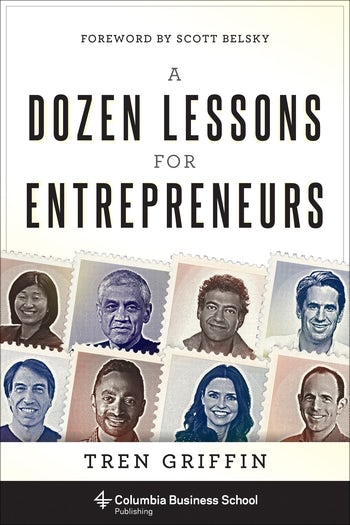Tahneer Oksman Recommends Recent Graphic Memoirs
The following is a post by Tahneer Oksman, author of “How Come Boys Get to Keep Their Noses?”: Women and Jewish American Identity in Contemporary Graphic Memoirs
In “How Come Boys Get to Keep Their Noses?” I examine the complex and exciting ways identity can be mapped out and pictured on the comics page. I chose to focus on autobiographical Jewish women cartoonists in particular because I found their ambivalence about Jewish identity—their desire to often simultaneously identify as insiders and outsiders—a captivating example of how comics can help visualize incongruity, paradox, and conflict alongside connection, acceptance, and recognition.
One of the (happy) frustrations I encountered in writing this book was that I kept stumbling across powerful works of graphic memoir that didn’t necessarily fit into the set of themes I was grappling with in the book. In other words, they weren’t particularly Jewish. Here I offer a brief glance at four works, three recently published and one forthcoming, that caught my attention and merit a closer look.
Jennifer’s Journal: The Life of a Suburban Girl, Volume 1
Jennifer Cruté
(Rosarium Publishing, 2015)
From its bubbly and enticing cover, which pictures a young girl playing with dolls in her room as a devil smoking a cigarette grins in the corner, to its sincere depictions of a serious artist focused on painting and creating, Jennifer Cruté’s Jennifer’s Journals is often startling in its unexpected juxtapositions. The book is partly the story of becoming an adult and artist and partly a family history, with amusingly jarring interludes featuring moments in the childhood of the author/artist’s friends. Cruté offers her readers a motley of such unusual narrative techniques, including punch lines, an adult translator who occasionally appears, and sometimes the simple but forceful confusion of a sequence of painful memories offered without explanation. Her characters are cartoonish, bubbly; but that doesn’t lessen the sting when, for example, in a sequence recalling distant family history (“Georgia, circa 1915”), her great-grandfather matter-of-factly tells her grandma Faye, “Aww, don’t worry, baby. Dead people can’t lynch us.” If anything, the book’s style catches its readers off-guard, offering an unpredictable, open-ended self portrait of a life still unfolding.
Turning Japanese: A Graphic Memoir
MariNaomi
(2d Cloud, forthcoming in spring 2016)
I’ve long been a fan of MariNaomi’s autobiographical comics, from her early collection Kiss & Tell, which documents a range of romantic (mis)adventures, to Dragon’s Breath and Other True Stories, an episodic compilation on family, work, and love. In Turning Japanese, MariNaomi brings her understated, often deadpan narrative voice to life with spare, fluid lines. On the surface, the book traces two seemingly unrelated threads: a new relationship weathering the ins-and-outs of everyday life; and the search for connection with a place and culture that the protagonist, who calls herself a “mutt,” has been distanced from. Born to a Japanese mother who fled home to marry and raise a family in America, MariNaomi reveals, over the course of the narrative, how the search for a future, with or without a partner, is inevitably, if sometimes vaguely, tied to one’s personal history, one’s past. Like the texts that I write about in How Come Boys?, this book reflects the complicated nature of identification and disidentification, of the ways we can paradoxically come to find who we are through our rejections and rebellions.
The Story of My Tits
Jennifer Hayden
(Top Shelf Productions, 2015)
There is a soft humor to Jennifer Hayden’s The Story of My Tits, a book recounting the history of the author’s, well, tits, beginning with her prepubescent anxiety over their non-appearance and ending with apprehensive musings over her post double-mastectomy reconstructive surgery. The circular structure of the narrative, composed mainly in four hand-drawn, evenly spaced panels to a page, feels honest and hopeful without being reductive or falsely upbeat. (“Oh my god. So I was back there again,” the author declares towards the very end of the book, when her husband tries to comfort her about her “square”-looking implants.) Hayden easily carries the reader over time through losses and changes steadied by the cartoonist’s even-keeled and reflective hand, which clearly delights in animating and reframing the past. Beyond the story of her tits, this is a book about claiming art and expression in order to reconcile the circumstance of living a life of uncertainty, as we all do.
Rosalie Lightning: A Graphic Memoir
Tom Hart
(St. Martin’s, 2016)
It is difficult to find the right words to convey the force and magnitude of Tom Hart’s memoir about losing his young daughter. That struggle — of searching for words and images to express what’s deepest and most internal — is in many ways what this book is about. For Hart, the loss being communicated is beyond comprehension; he struggles to remove himself, replacing his drawn image with cartoon characters, with sorrowful prose, with smudges of black ink. The power of this narrative comes not just from its shape and storyline but also from the unstated societal demand not to show and tell; while we might live in an age of memoir and confession, the truly sorrowful, the non-redemptive, remains, too often, taboo. This is why Hart’s memoir, of life, love, and loss, is so critical: to draw this story, to read this story, is to acknowledge and respect all of life’s possibilities, to recognize what feels most unacceptable, most impossible.




